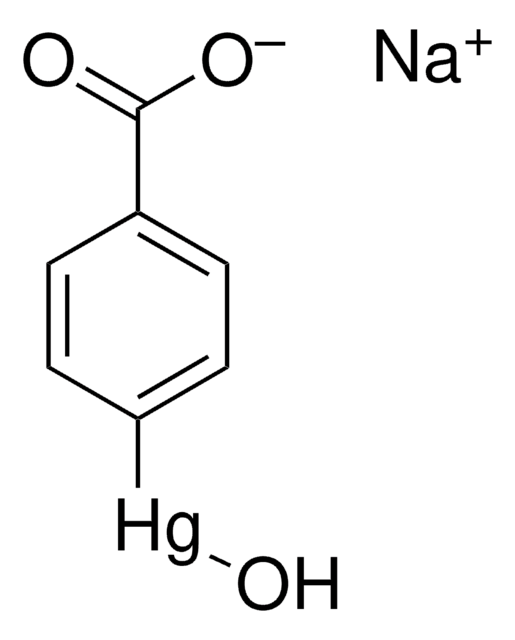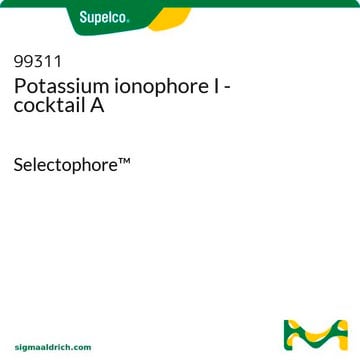M9784
Mersalyl acid
analytical standard
Synonym(s):
2-(3-Hydroxymercurio-2-methoxypropylcarbamoyl)phenoxyacetic acid, 2-[N-(3-Hydroxymercuri-2-methoxypropyl)carbamoyl]phenoxyacetic acid, Salyrganic acid
About This Item
Recommended Products
grade
analytical standard
Quality Level
Assay
≥85% (TLC)
technique(s)
HPLC: suitable
gas chromatography (GC): suitable
mp
192-193 °C (dec.) (lit.)
solubility
NH4OH: soluble, clear to hazy
application(s)
forensics and toxicology
pharmaceutical (small molecule)
veterinary
format
neat
SMILES string
COC(CNC(=O)c1ccccc1OCC(O)=O)C[Hg]O
InChI
1S/C13H16NO5.Hg.H2O/c1-9(18-2)7-14-13(17)10-5-3-4-6-11(10)19-8-12(15)16;;/h3-6,9H,1,7-8H2,2H3,(H,14,17)(H,15,16);;1H2/q;+1;/p-1
InChI key
HQRSUIDICNOLPX-UHFFFAOYSA-M
Looking for similar products? Visit Product Comparison Guide
Application
Signal Word
Danger
Hazard Statements
Precautionary Statements
Hazard Classifications
Acute Tox. 1 Dermal - Acute Tox. 2 Inhalation - Acute Tox. 2 Oral - Aquatic Acute 1 - Aquatic Chronic 1 - STOT RE 2
Storage Class Code
6.1A - Combustible acute toxic Cat. 1 and 2 / very toxic hazardous materials
WGK
WGK 3
Flash Point(F)
Not applicable
Flash Point(C)
Not applicable
Personal Protective Equipment
Choose from one of the most recent versions:
Already Own This Product?
Find documentation for the products that you have recently purchased in the Document Library.
Our team of scientists has experience in all areas of research including Life Science, Material Science, Chemical Synthesis, Chromatography, Analytical and many others.
Contact Technical Service











